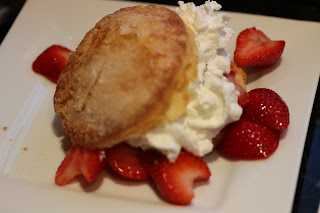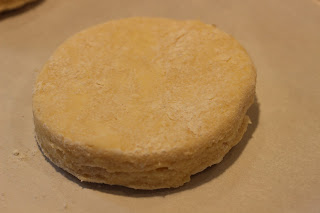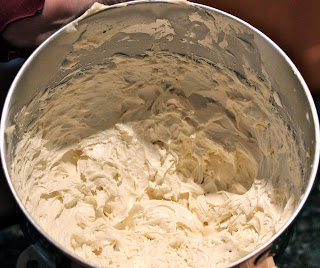It's finally Spring! Strawberries are starting to taste like themselves again, although they're still a little tart. I've tried lots of different shortcake recipes through the years, but none that I like as much as Nigella Lawson's scone recipe in How to Be a Domestic Goddess (which is a GREAT title, by the way). And if you have a scone or two left over you can reheat it and spread it with cherry or apricot preserves. So here goes:
STRAWBERRY SHORTCAKES
2 cups plus 2 Tablespoons AP flour
1/2 teaspoon salt
1 Tablespoon baking powder
3 Tablespoons sugar
1/2 cup (4 ounces) unsalted butter, frozen
1 large egg, beaten
1/2 cup milk (Nigella uses cream, but if you don't have any on hand, milk is fine)
1 egg white, lightly beaten
2 Tablespoons sugar
approximately 11 ounces strawberries
1 Tablespoon sugar
1 cup heavy cream, whipped with 2 Tablespoons confectioner's sugar and 1/2 teaspoon vanilla
Preheat the oven to 400 degrees F.
Line a baking sheet with parchment.
Mix the flour, salt, baking powder, and 3 Tablespoons sugar in a bowl. Grate the butter into these dry ingredients
and stir with a fork as you go so the butter doesn't clump together.
Whisk the egg into the milk,
and pour into the flour mixture a little at a time, using a fork to mix.
Don't over mix it. It should look about like this:
Turn the dough out onto a floured surface and flatten and fold it a few times.
Roll gently to a thickness of about 3/4-inch.
Dip a 3-inch round cutter (or a glass if you don't have one) in flour, and cut straight down, being sure not to twist it (so the layers can separate and rise in the oven). Cut out as many rounds as you can--you should get 7 or 8 in all.
Place the shortcakes about 1 inch apart on the baking sheet, brush the tops with the beaten egg white, which should look about like this:
and sprinkle with the remaining 2 Tablespoons of sugar.
If it helps with the rest of your cooking, you can cover and refrigerate them now for up to 2 hours.
Bake for 10-15 minutes, until golden brown, and let them cool for a short while on a wire rack. You can see how nicely the layers have separated here
which is a combination of the folding and not twisting when you cut them out.
Meanwhile, crush about 1/3 of the strawberries with 1 Tablespoon sugar.
Halve or quarter the rest of the strawberries and add sugar if they're tart. (Later in the summer you won't need to). If you do the strawberries ahead the sugar will soak into them and they will soften somewhat...very useful when they aren't totally ripe). Whip the heavy cream with confectioner's sugar and vanilla.
To assemble, split each one across the middle
and cover with a spoonful of the crushed strawberry mixture, (which will soak into the scone)
and then add the larger strawberries (I like to be generous).
Finally, add a dollop of whipped cream and set the top back on.
Makes 8.





















































